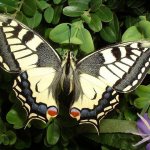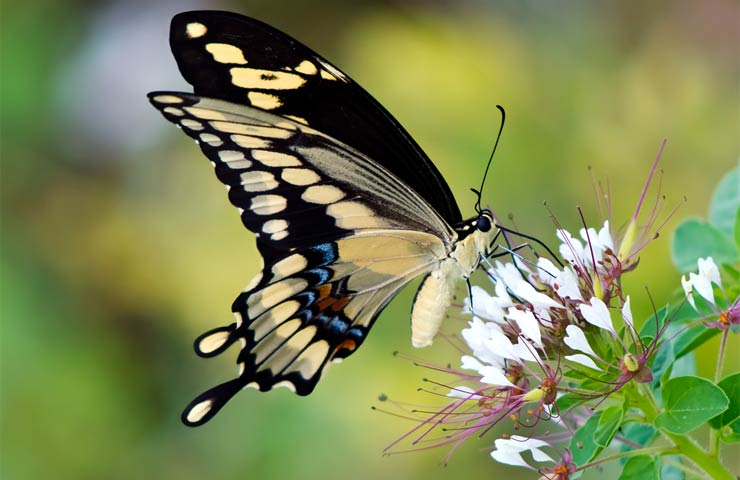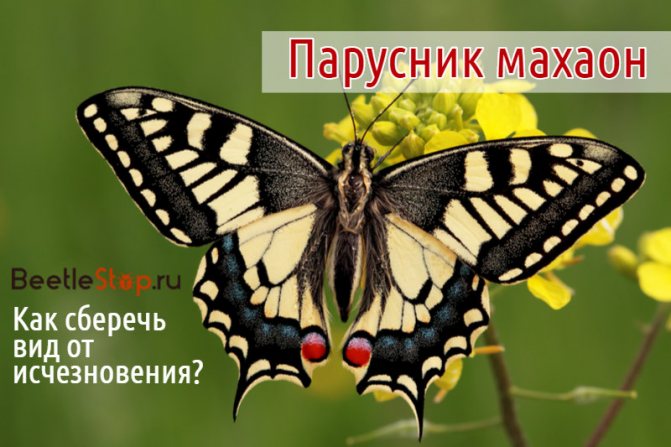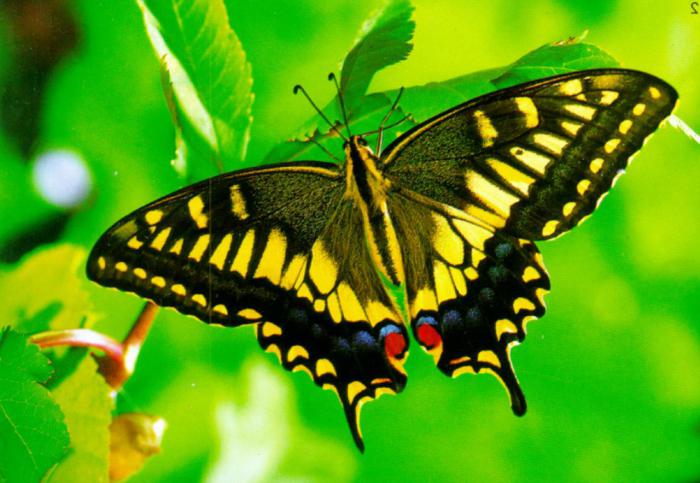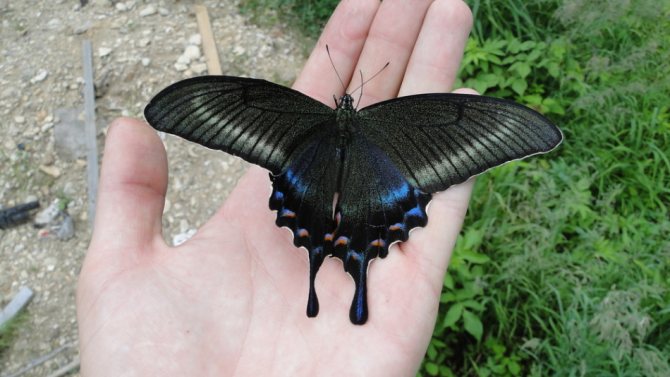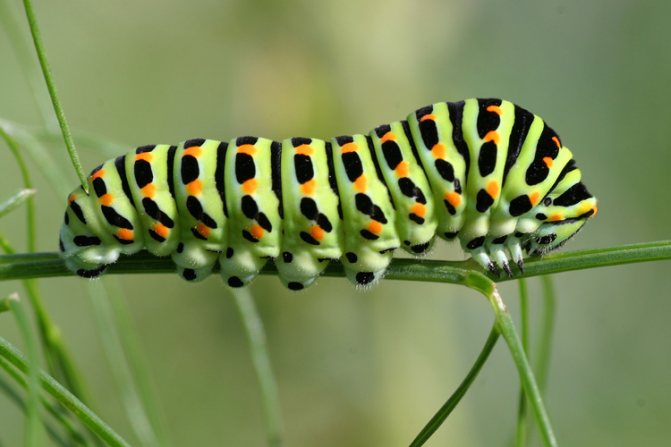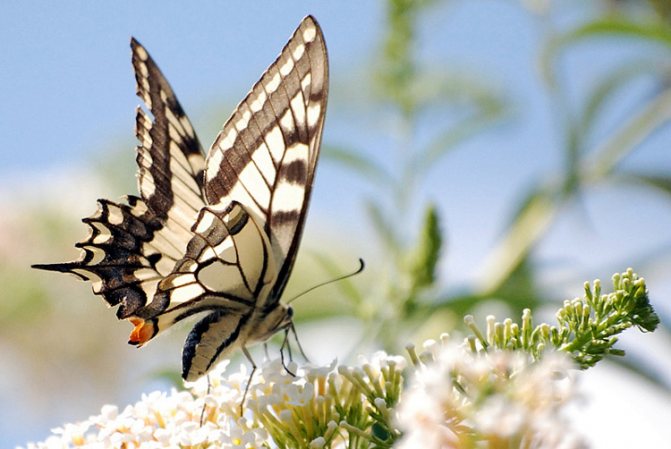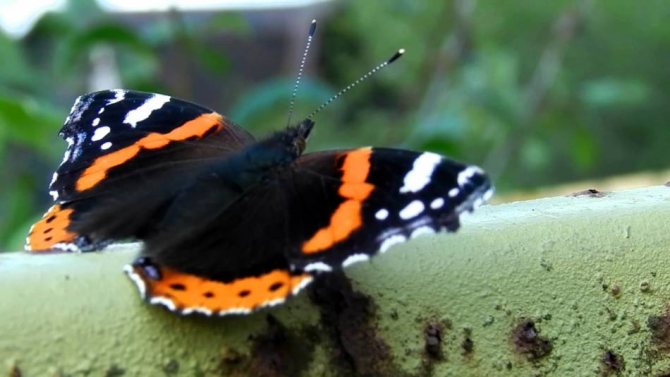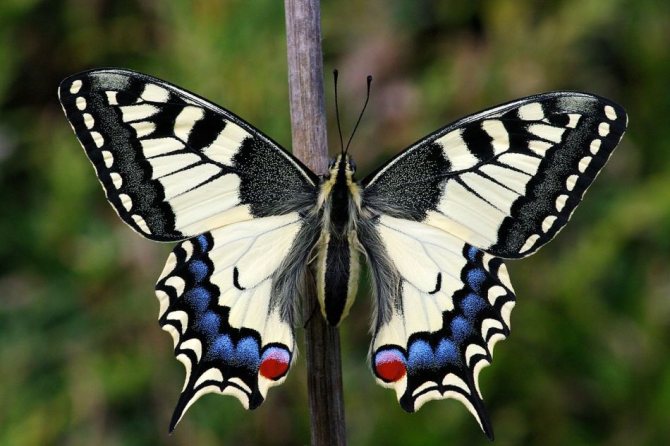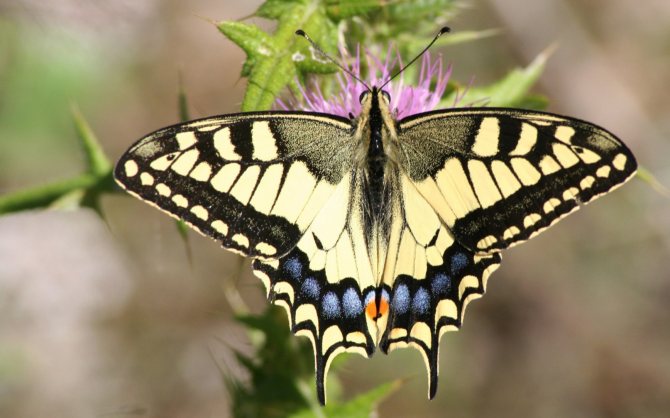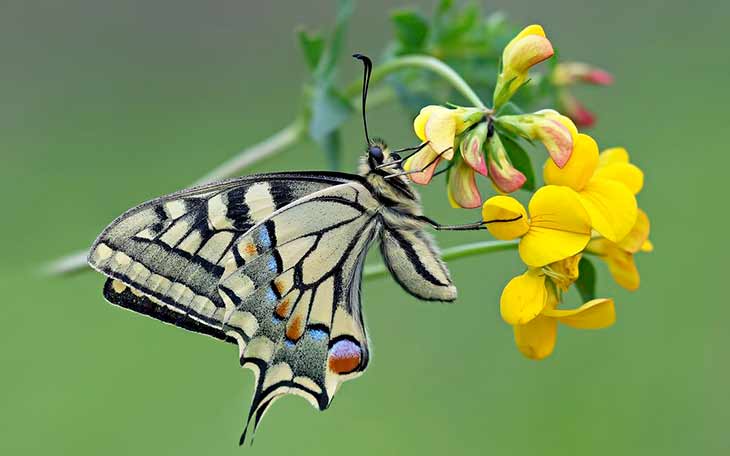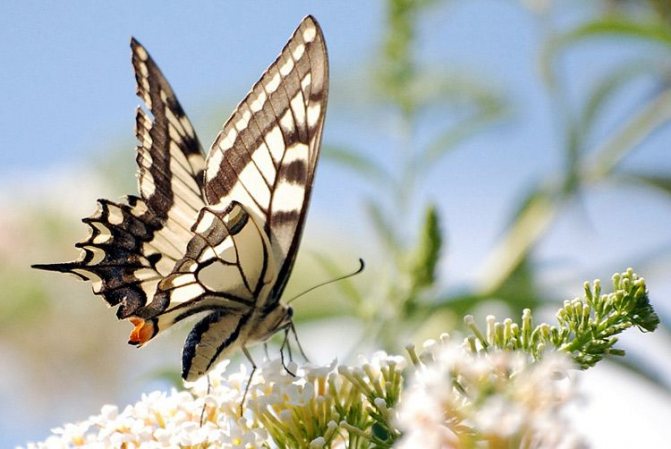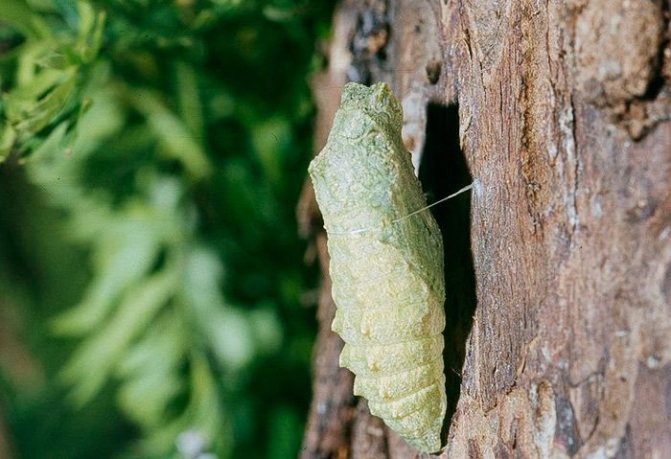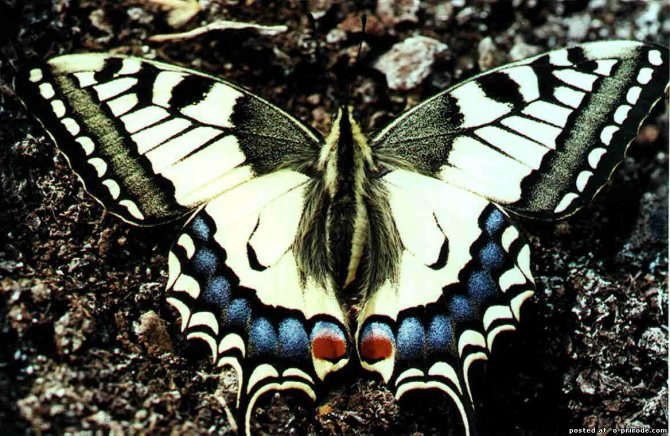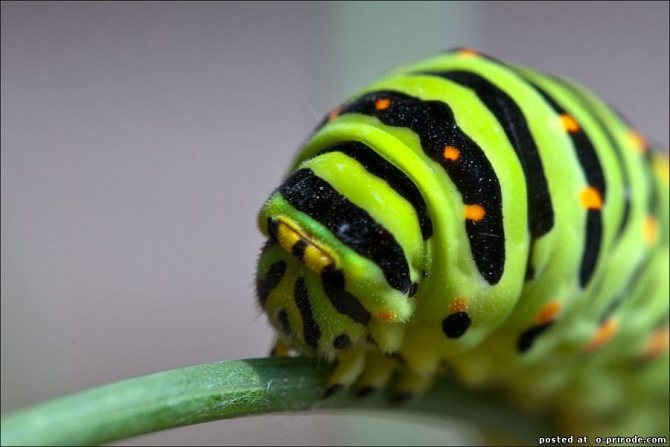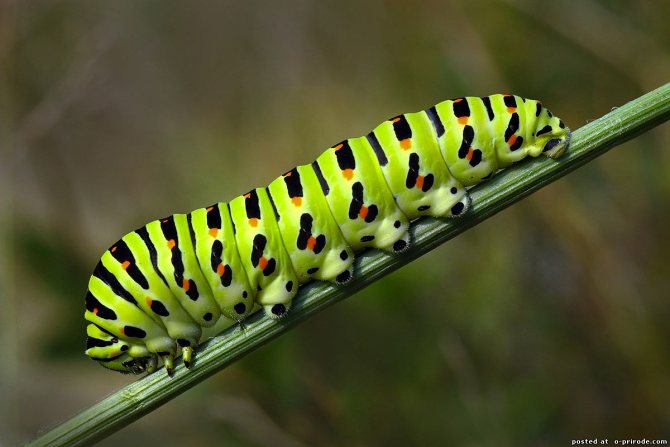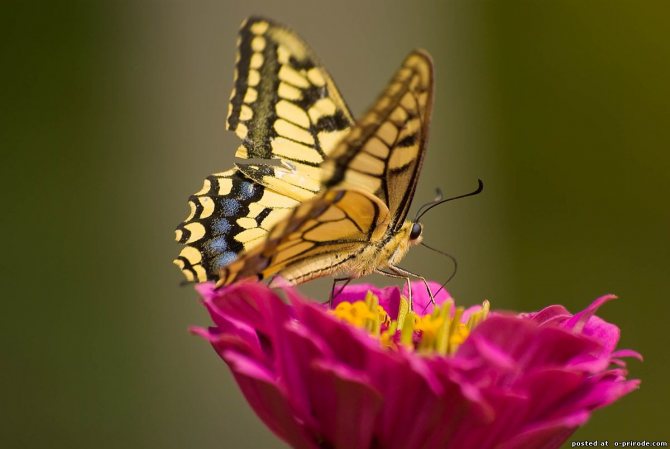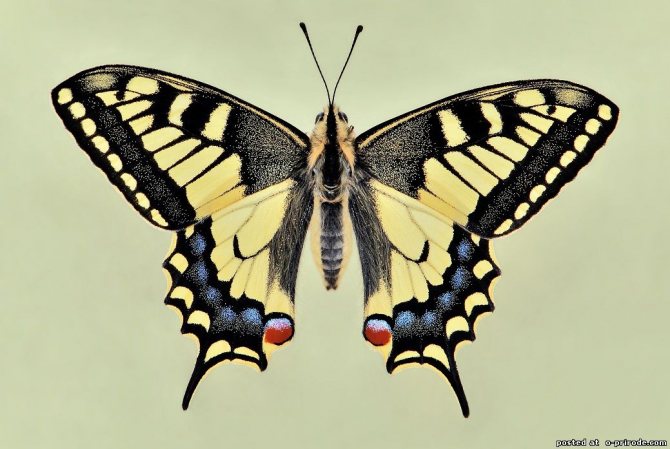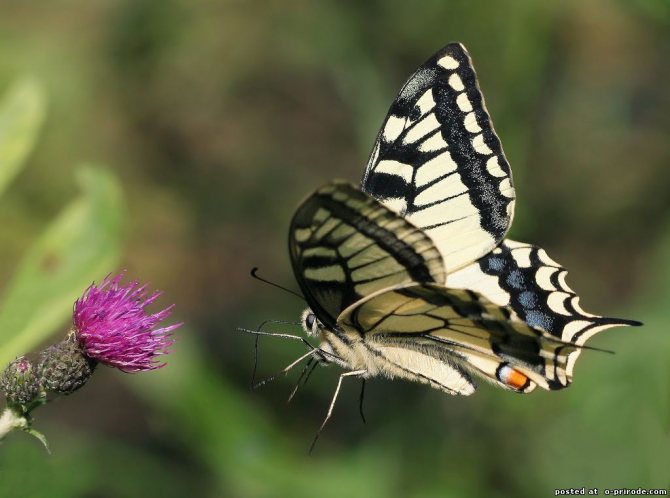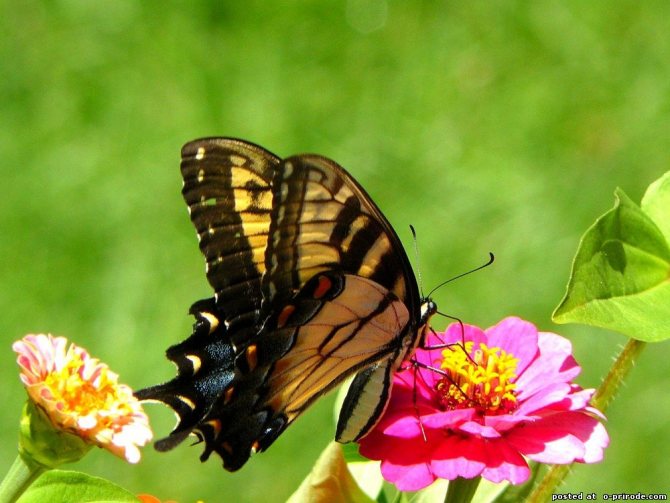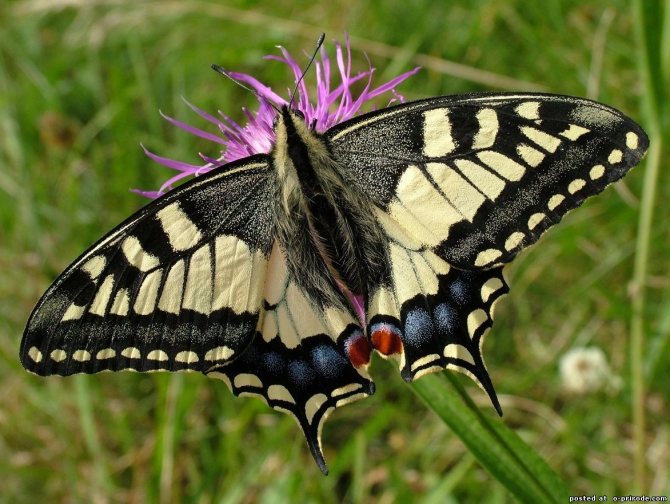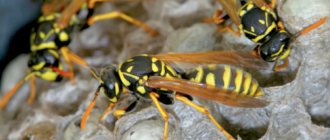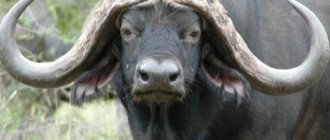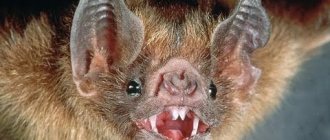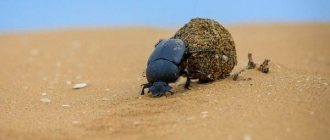It is impossible not to admire these creatures! Description of the swallowtail butterfly - an arthropod insect, of the order Lepidoptera. This butterfly is a member of the sailfish family, which includes the genus Papilio.
Swallowtail (Papilio machaon).
There is an opinion that the most beautiful animals inhabit only distant island countries and are found in tropical forests. Imagine - we were wrong! Even in our country, you can find truly beautiful representatives of the fauna, endowed by nature with wonderful patterns or unusual shapes. Only the butterflies living next to us, what are they worth! Take swallowtail, for example. This wondrously beautiful insect lives everywhere, including our climatic zones.
The large area gave the opportunity for the emergence of many subspecies of swallowtail And today there are about 37 species of this insect. Why did the butterfly get such a name - "swallowtail"? The roots of this name take us to an ancient country - Troy. It was there, once, according to legends, that the miracle doctor Machaon lived, who skillfully healed the wounded soldiers.
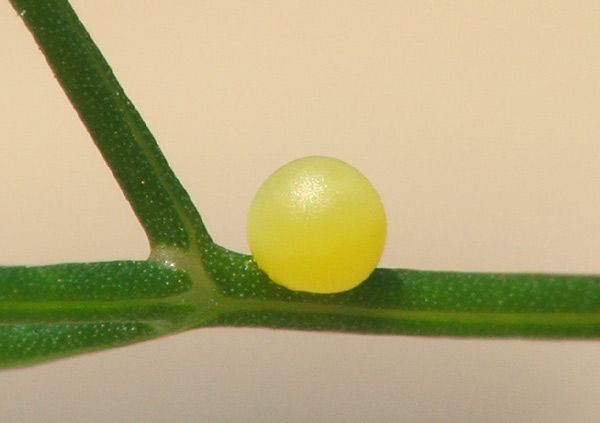
Swallowtail egg (enlarged).
What morphological description
Swallowtail is one of the most common representatives of its species. The butterfly was named after the mythical Greek physician Machaon. The name of the insect was given by Karl Liney. The female and male differ in size:
- male wingspan - 7.5-9.5 cm;
- the wingspan of the female is 6.5-8.0 cm.
The main color of the wings is yellow. It is he who is most present. There is a pattern of black stripes and specks. There is a pronounced darkening in the center of the wings. There is a wide black border on the edge. There are pronounced yellow hemispheres.
The swallowtail wings themselves are wavy. The lower tails reach 8-10 mm. The butterfly's body is light and covered with sandy villi. On the chest and abdominal parts of the body, as well as on the wings, there are black stripes. Butterflies have the ability to fully navigate in space, to distinguish some colors and objects. This is possible thanks to the developed organs of vision.


Butterflies of this species have rather large antennae.
Like other butterflies, the swallowtail has long antennae. The mouth apparatus of a sucking type insect. Also, the representative has a proboscis, which helps to drink nectar. During the flight, it is in a twisted state.
Not only butterflies, but also caterpillars have incredible beauty. Even in this state, the insect is bright and colorful. It is quite difficult not to notice it.
The insect has 6 well-developed legs. The summer generation of butterflies is paler than the spring generation.
Swallowtail butterfly: day or night?
Swallowtail refers to daytime butterflies, since the waking period teaches during the daytime. Such butterflies are distinguished by a slender body, huge wings and bright colors. In addition, they pollinate flowers that bloom in the daytime.
During the breeding season, such insects often flock into flocks. After fertilization, the insects scatter again.
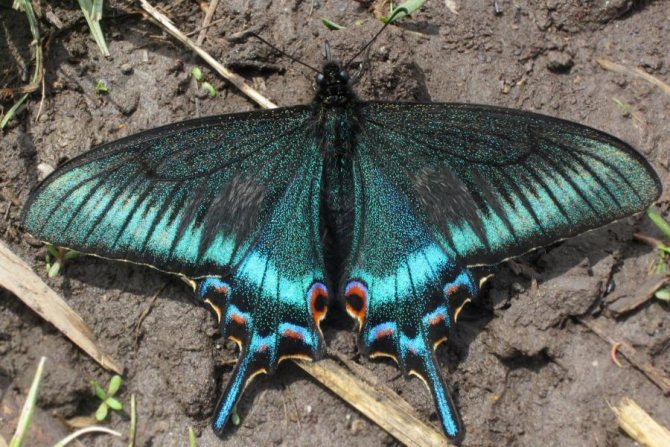

Swallowtail butterfly: day or night?
Where is swallowtail common
You can meet swallowtail in any corner of Europe. Ireland is an exception. The butterfly can also be seen in:
- America;
- Africa.
In the mountains of Tibet, the butterfly lives at an altitude of 4500 meters above ground level. The butterfly loves open spaces. That is why the insect is often found in meadows, forest edges, in the steppes.
An adult lives for about 3 weeks. Depending on the area of residence, the insect is able to meet from mid-spring to October.


These butterflies can be found in the mountains of Tibet.
Habitat
The largest number of Machaons is found in Europe, with the exception of Denmark and Ireland. Some species live well in Asia, North America and Africa.
They prefer to live in steppe and meadow spaces, as well as forests and mountains. In the Alps, at an altitude of two kilometers, you can find this butterfly. Also in Tibet, representatives met at an altitude of almost 5 kilometers.
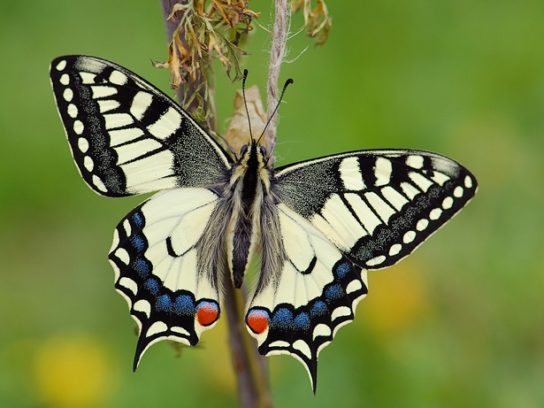

What are the subspecies
Swallowtail is divided into subspecies, which are described in the table.
| Bairdii | The insect is black in color. This is the main color of this subspecies. It lives mainly in the northern part of America. Saturated spots are present in the lower part of the wings. |
| Ussuriensis | These insects are large in size. Females are larger. The color contains deep black and blue. |
| Hippocrates | The representative can be found in Japan. There is a blue stripe above the eye. |
| Kamtschadalus | The butterflies are bright yellow in color. Pale black patterns are observed on the wings. |
| Gorganus | It is this subspecies that is widespread in the territory of the Russian Federation and neighboring countries. The wings are yellow with a distinct black pattern. Blue spots are also present. |
It is almost impossible to independently determine which subspecies the swallowtail belongs to. Some species have minor differences.
What color are swallowtail butterflies: photo
The color of butterflies is very diverse. Mostly there are individuals with brown-red and black coloration. You can also find blue and blue butterflies. Below are photos of swallowtail butterflies.
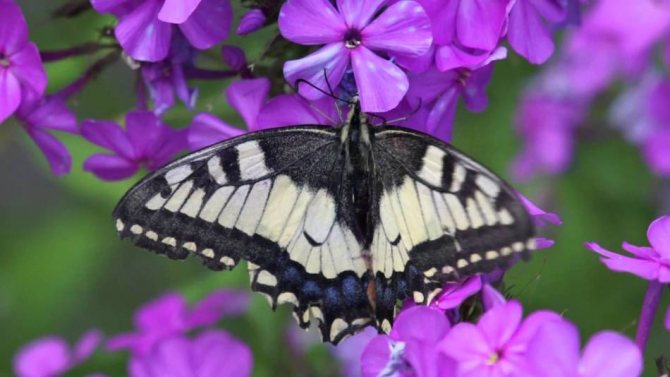

What color are swallowtail butterflies: photo What color are swallowtail butterflies: photo What color are swallowtail butterflies: photo What color are swallowtail butterflies: photo What color are swallowtail butterflies: photo What color are swallowtail butterflies: photo
What does a caterpillar look like
One of the stages of transformation into a butterfly is a caterpillar. The first generation of representatives appears in May. There is a gradual transformation of appearance.
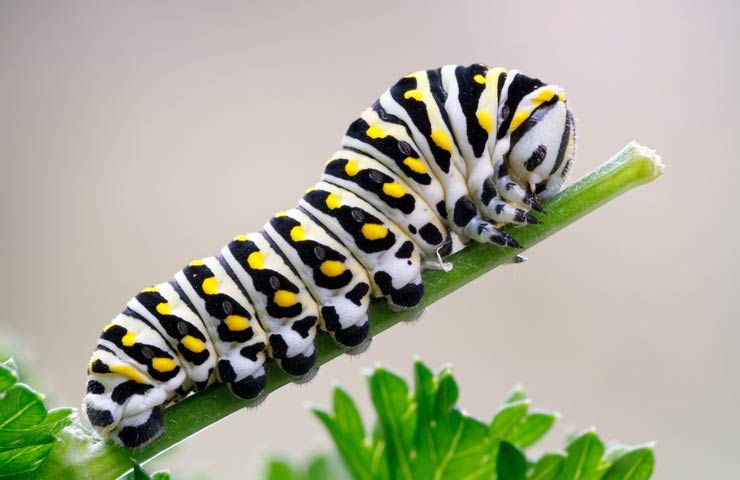

The swallowtail caterpillar has a very original appearance.
After leaving the egg, the caterpillar is black with a pronounced white spot on the back. Only after a few molts, the representative becomes deep green with black stripes and orange spots that are observed on each segment of the body.
The larva has 3 pairs of true legs. There are 5 more pairs of pseudopods. Unlike many other representatives, the caterpillar has a defense mechanism. The osmetry fork-shaped glands have such a role.
Osmetry scares off enemies due to its pungent smell, which protects from flies, wasps, ants. This allows the insect to continue maturing.
The caterpillar is not protected from birds. The pungent smell does not scare them away. This also applies to other large predators. That is why 40-50% of the offspring constantly die.
Origin of the species and description
id Papilio machaon belongs to the Sailboat family (from Lat. Papilionidae). The view was discovered by the Swedish naturalist in 1758 Karl Liney. The biologist named the butterfly after the ancient Greek physician Machaon, who was a therapist, surgeon and fought for the Greeks in the Trojan War (1194 BC). The doctor was the son of Asclepius (the god of healing) and Epione.
There is a legend that Dr. Machaon healed warriors wounded in battle. In the battle for Troy, he participated in order to get the hand and heart of Elena the Beautiful. But when he dies in one of the battles, his soul turns into a beautiful yellow butterfly with a black pattern on its wings.
Since the area of the swallowtail is quite wide, up to 37 subspecies of the moth are distinguished. The most common among them:
- Orientis - south of Siberia;
- Ussuriensis - Amur and Primorye;
- Hippocrates - Japan, Sakhalin, Kuril Islands;
- Amurensis - basin of the middle and lower Amur;
- Asiatica - Central Yakutia;
- Kamtschadalus - Kamchatka;
- Gorganus - Central Europe, Caucasus;
- Aliaska - North America;
- Brutannicus Seitz - Great Britain;
- Centralis - the Caucasian coast of the Caspian Sea, the Northern Caspian Sea, the Kura valley;
- Muetingi - Elbrus;
- Syriacus - Syria.
There are other subspecies, but scientists do not recognize many of them, considering only seasonal forms, similar to nominative individuals. The dependence of the color of the wings on temperature does not allow taxonomists to come to a common opinion, as a result of which there is a constant debate on this topic. Outwardly, the appearance is similar to the Corsican sailing ship and the sailing ship Aleksanor.
What it eats and how it reproduces
As food, the butterfly prefers umbrella plants. This is the basis of nutrition. Caterpillars love the greens of hogweed, dill, carrots, and parsley. Adults, thanks to their elongated proboscis, eat nectar from flowers.


Swallowtail eat dill greens
For agriculture, swallows do not pose a danger. This is primarily due to the small number of these fauna representatives. The mating season for butterflies begins in late spring. This usually happens in May. The time span may change due to the area of residence and climatic conditions.
The mating period can shift by:
- July;
- August;
- September.
Mating takes place directly in the air. This action is called mating flutter. After that, the female lays 1-3 eggs, which have a rich yellow color. In one season, an individual is able to postpone up to 120 of them.
Caterpillars hatch from eggs after a week. The larvae are attractive and rich in color. As mentioned earlier, gradually the color turns green, and pronounced stripes and spots appear on the body.
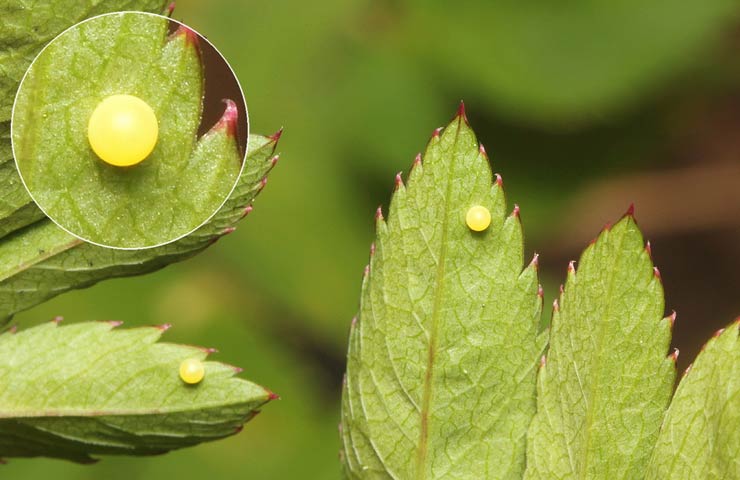

Butterflies of this species usually lay only a few eggs.
The larvae are quite voracious. Caterpillars actively eat leaves immediately after birth. Over time, the representative turns into a chrysalis. The color will directly depend on the season. Brown color appears in winter and greenish in summer.
The pupal period lasts several months. The transformation into a butterfly will occur after warming. It is in warm weather that the insect can fly, feed and not be afraid of the cold.
Breeding period
One female lays about 120 eggs. During laying, the butterfly hangs over the plants to lay eggs on the side of the stem or on the leaf of the plant. The Swallowtail egg stage lasts up to 5 days, at the end of which a black larva with bright spots appears. With age, they change color to green with orange dots and black stripes.
The transformation of the Machaon caterpillar into a pupa
The larvae are extremely active and eat constantly. Due to this, literally in a week, they reach 9 mm in length. The most common food for larvae is ovaries, flowers and leaves. One larva can eat a dill bed. But with the onset of the pupa, the larva ceases to store nutrients from food. The pupal period occurs on plant stems. The color can be either yellow-green or brown. It depends on the pupation period. The pupal period lasts from 2-3 weeks to several months. The rate at which a butterfly appears depends on the climate.
What character and lifestyle
Swallowtail are distinguished by an active lifestyle. It is from May to August that an insect can be seen on forest edges, in parks and near roads. The number of the representative is rapidly decreasing due to environmental pollution.
By watching this video, you will learn how a pupa turns into a swallowtail butterfly:
The insect prefers the daytime. Even when sitting on a flower to consume nectar, the swallowtail does not stop moving its wings. It is very difficult to catch a representative of the fauna.
When any threat appears, the insect releases a poisonous substance. It is interesting to know that more than 50 years ago this species was actively exterminated by people, because they believed that they were dangerous.
Constant movement is essential to defend against potential predators. This is one of the most agile butterflies.
Behavior in nature
As Swallows become active as the day comes, they have access to many colors. These large butterflies need a lot of nectar, so they can often be found in various parks and gardens.
Males are territorial insects. They choose their personal space at a dominant height. Also, they are not alien to gather in small groups, sitting on the shore of reservoirs. All individuals tend to sit on hills and tall trees. Many Machaons flutter at the height and show their peculiar dance up and down.
In nature, it is almost impossible to find the Swallowtail at rest with all the wings spread, since the rear ones are invisible against the background of the front ones. Swallows can fully spread their wings when exposed to warm bright sunlight.
Is it likely to be kept at home
Sometimes the swallowtail is chosen for keeping at home. To do this, you need to prepare:
- small aquarium;
- a small container for water, in which there will be dill to feed the caterpillars;
- a twig for attaching a pupa.
A small layer of thick paper is laid out at the bottom of the aquarium. This is to absorb excess moisture. An open container with water and dill must be left in the container.
The branches should be small, but have many branches that stick out in different directions. In the future, the caterpillar will attach to the twigs. We'll have to take a responsible approach to the selection of feed. The most common options that will please the swallowtail include:
- nectar;
- syrup;
- fruits.


Swallowtail love fruit
Insects have a short lifespan. At home, the butterfly dies in 3-4 weeks. Feeding should be done a maximum of a couple of times a day. At night, the aquarium should be covered or placed in the darkest place.
Enemies of butterflies
The main enemies of the swallowtail are birds, spiders and other insectivores. But butterflies are also very vulnerable in the stages of transition to an adult: in the form of eggs, caterpillars and pupae. Many die because of the steppe fires.
The number of these butterflies is different in different regions. This is greatly influenced by their capture for collections. In Ukraine, Germany, Lithuania and Latvia, these butterflies are listed in the Red Book. The swallowtail butterfly does not belong to numerous species and does not cause harm to agriculture. But this became known much not so long ago, and earlier they waged a merciless struggle with her. If scientists fail to restore the population of these beautiful creatures, then they can disappear from the face of the Earth.
Lifestyle


- Individuals of the discussed species have many enemies. Spiders, ant families and birds do not mind to feast on fluttering creatures. If you keep this creature at home, then there is no such enemy situation, respectively. Reproduction is carried out from the middle to the end of the springtime.
- Climate is of decisive importance for reproduction. The female does the laying under the foliage of the vegetation. She lives for 20 days maximum, in several flights she lays 3 eggs. Over the entire life cycle, more than 1000 eggs are obtained, which is essential for such a short period.
- In two generations, caterpillars are born. Spring individuals are considered first, and summer individuals are considered second. It is important to remember that you should not catch butterflies without first looking into the Red Book. It includes many insects that are not allowed to be caught.
- The caterpillars are initially pigmented in black. In the upper part of the case, there are whitish specks, as well as black stripes and orange edging.With the course of life, the caterpillar turns green, black stripes remain on its body, and spots of the same color are shown instead of edging.
- The first butterflies emerge from pupae 15 days after pupation, and the second will take about 1.5 months for full development. Spring pupae are colored green-yellow, and summer pupae are brown and dense.
peacock butterfly - description, habitat, species

